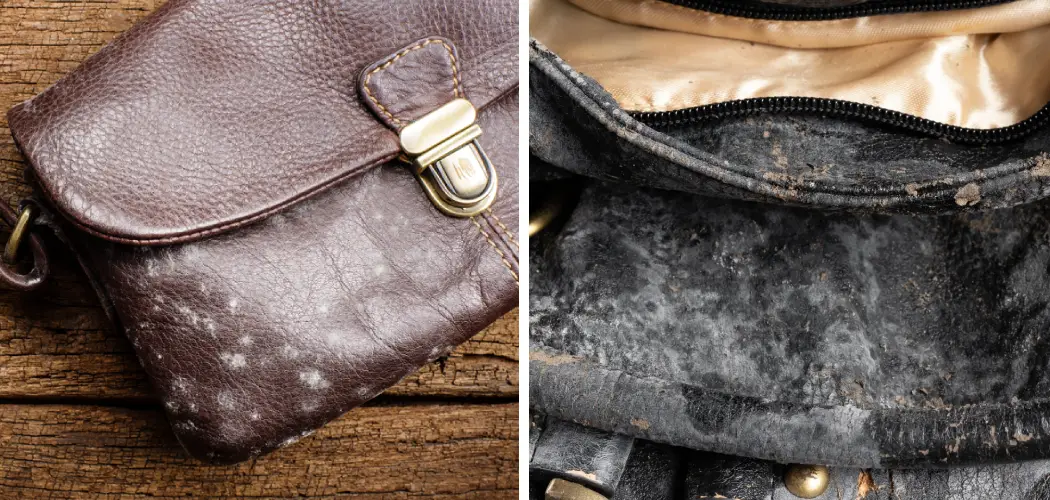Mold on leather can be a stubborn issue, but with the right techniques, it’s quite possible to restore the material to its former glory. Leather is a durable and luxurious material favored for its aesthetic appeal and longevity.
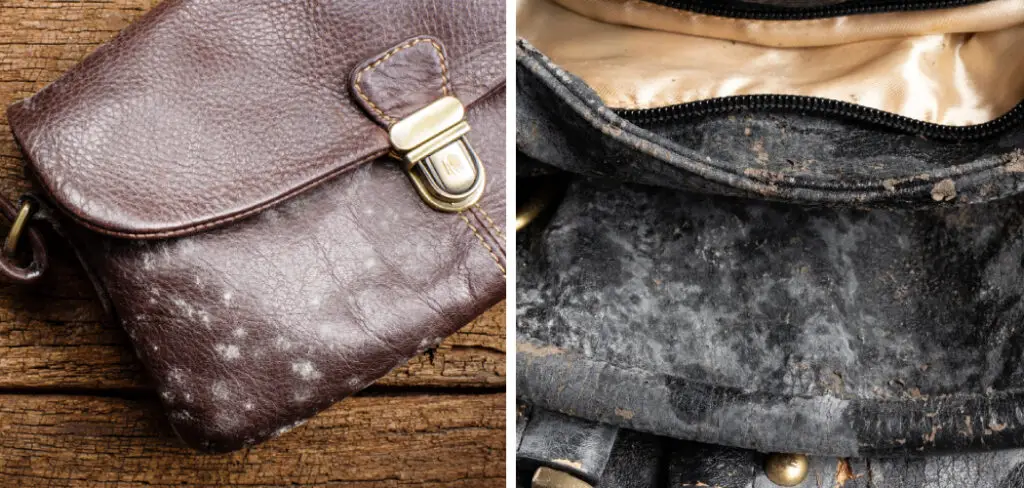
However, improper storage or exposure to moisture can lead to the growth of mold, which not only impacts the appearance but can also damage the leather.
This guide on how to clean leather with mold will walk you through the steps required to effectively clean leather affected by mold, ensuring that it remains in good condition for years to come.
What is Mold?
Mold is a type of fungus that thrives in damp and humid environments. It typically appears as black or green spots on the surface of leather, accompanied by a musty odor. Leather is an organic material, making it an ideal breeding ground for mold, especially when stored in moist conditions.
Mold can also develop on leather items that have been exposed to water or other liquids. It tends to grow quickly, spreading from one surface to another if not addressed promptly. If left untreated, mold can cause discoloration and weakening of the leather fibers, leading to irreversible damage.
Supplies Needed
Before you begin cleaning your leather items affected by mold, gather the necessary supplies:
Soft-bristled Brush:
A soft-bristled brush is suitable for gently removing mold from leather without damaging the surface.
White Vinegar:
Vinegar has antibacterial and antifungal properties, making it an effective cleaning agent for mold on leather.
Clean Cloth:
Use a clean cloth to wipe away mold spores and excess moisture during the cleaning process.
Distilled Water:
Distilled water is free of minerals that can cause discoloration or damage to leather. Avoid using tap water, which may contain impurities.
Leather Conditioner:
Cleaning agents like vinegar can dry out the leather, so it’s essential to use a conditioner afterward to restore moisture and prevent cracking.
9 Step-by-step Guides on How to Clean Leather With Mold
Step 1: Put on Protective Gear
Before starting the cleaning process, ensure you have the appropriate protective gear. Mold can release spores that are harmful when inhaled, so wearing a mask is crucial to protect your respiratory system.
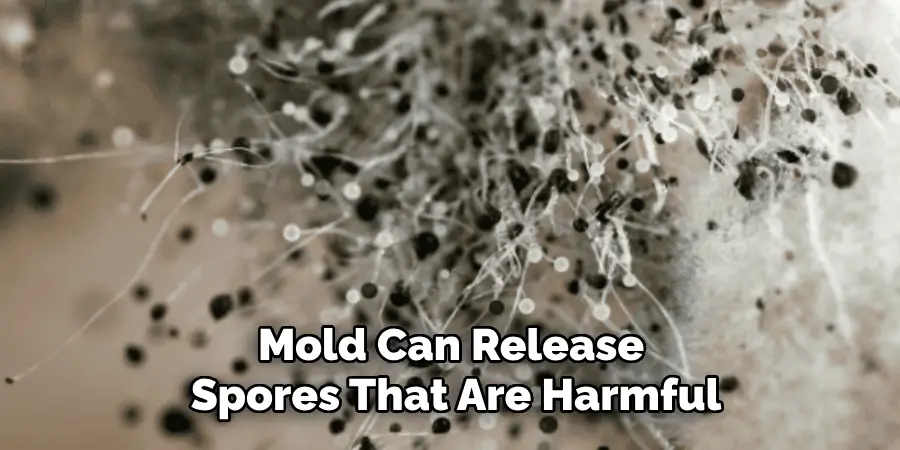
Additionally, gloves should be put on to prevent direct contact with mold spores, which can cause skin irritation or allergic reactions. Safety goggles are also recommended to protect your eyes from any splashes or airborne particles during the cleaning process.
Step 2: Brush Away Loose Mold
Using a soft-bristled brush, gently brush away any loose mold from the leather surface. It’s crucial to perform this step outside or in a well-ventilated area to prevent mold spores from spreading indoors. Hold the leather item securely and use light, sweeping motions to avoid damaging the leather.
After brushing, inspect the leather to ensure most of the loose mold has been removed. Dispose of any debris collected during this process in a sealed plastic bag to prevent mold spores from contaminating other areas.
Step 3: Prepare the Cleaning Solution
To effectively clean mold off leather, you need to prepare a mild cleaning solution. In a small bowl or container, mix equal parts white vinegar and distilled water.
White vinegar is a natural disinfectant and antifungal agent, making it an excellent choice for combating mold. The distilled water ensures that no impurities will interfere with the cleaning process or damage the leather.
Carefully stir the mixture to ensure it is well combined. It’s important to use distilled water rather than tap water because the minerals in tap water can cause staining or additional damage to the leather. Once the cleaning solution is ready, move on to the next step, which is to apply it to the affected leather area.
Step 4: Test the Solution on a Small Area
Before applying the cleaning solution to the entire leather surface, it’s always advisable to test it on a small, inconspicuous area first. This will help you determine if the solution is safe for your particular type of leather and ensure that it does not cause any discoloration or damage.
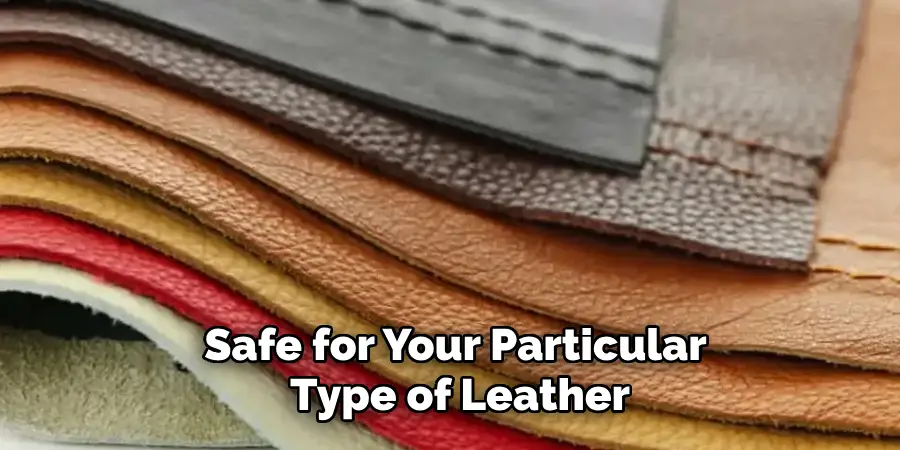
Apply a small amount of the cleaning solution on an unseen part of the leather, such as under a flap or near a seam. If there are no adverse reactions after a few minutes, proceed with using the solution on the rest of the affected area.
Step 5: Apply Cleaning Solution to Mold-Affected Area
Once the solution has been tested and deemed safe, you can proceed with the cleaning process. Dampen a clean cloth with the vinegar and distilled water mixture, then gently wipe the mold-affected areas of the leather.
Avoid soaking the leather; a damp cloth is sufficient to clean the surface without oversaturating it. Work in small sections, ensuring that you cover all visible mold spots.
As you clean, periodically rinse the cloth in the cleaning solution to remove accumulated mold spores. This will prevent the spread of mold during the cleaning process.
Take care to wipe the leather surface uniformly so no areas are missed, and do not rub too harshly to avoid damaging the leather fibers. Once the entire mold-affected area has been cleaned, move on to the next step to remove any residual moisture and cleaning solution.
Step 6: Wipe Away Excess Moisture
After cleaning the leather with the vinegar solution, it’s important to remove any excess moisture that may remain on the leather surface. Using a clean, dry cloth, gently pat the leather to absorb moisture. Avoid rubbing the leather, as this can cause further damage or spread any remaining mold spores.
Ensure that the leather is as dry as possible before proceeding to the next steps. Proper drying is essential to prevent further mold growth and to maintain the condition of the leather.
If feasible, place the leather item in a well-ventilated area or use a fan to aid in the drying process. Avoid direct heat sources like heaters or sunlight, as they can cause the leather to dry out excessively and crack. Once the leather is dry, it’s ready for the next stage of restoration.
Step 7: Treat Lingering Mold Stains
In some cases, mold stains may remain on the leather surface even after cleaning. To remove these stubborn spots, mix equal parts lemon juice and salt to form a paste. Apply this paste to the affected areas of the leather and leave it for about 10 minutes.

Using a clean cloth, wipe away the paste and any remaining mold stains. The acidic properties of lemon juice combined with the abrasiveness of salt can help lift tough stains from leather without causing damage.
If there are still visible stains after using this method, you can repeat the process or move on to other stain-removal methods specifically designed for leather surfaces.
Step 8: Dry Leather Thoroughly
Properly drying the leather is a crucial step in preventing future mold growth and maintaining the leather’s quality. Once any lingering mold stains have been treated, ensure that the leather dries completely.
Place the leather item in a well-ventilated room away from direct sunlight and heat sources, as these can cause the leather to dry out too quickly and crack. Using a fan to circulate air can help speed up the drying process without damaging the leather.
If the leather item is small enough, you can also consider hanging it up to allow air to flow around it freely. Periodically check on the leather to ensure it is drying evenly. Take care to wipe off any moisture that accumulates on the surface during this process.
Properly drying the leather can take several hours to a full day, depending on the item’s size and thickness. Once the leather is completely dry, you can proceed with conditioning and further restoring the leather to its optimal state.
Step 9: Condition and Restore the Leather
After thoroughly cleaning, drying, and treating mold stains on the leather, it’s crucial to condition and restore the leather to prevent future damage. Use a high-quality leather conditioner to replenish any lost oils and moisture in the leather caused by mold growth and cleaning.
Follow the instructions on the conditioner carefully and apply it evenly over the entire leather surface using a soft cloth or brush. This will help keep the leather supple, prevent drying out or cracking, and maintain its natural luster.
You can also use specialized products such as leather waterproofing sprays to further protect your restored leather from future mold growth. Follow all product instructions on how to clean leather with mold carefully and test them on a small area first before applying them to the entire leather surface.
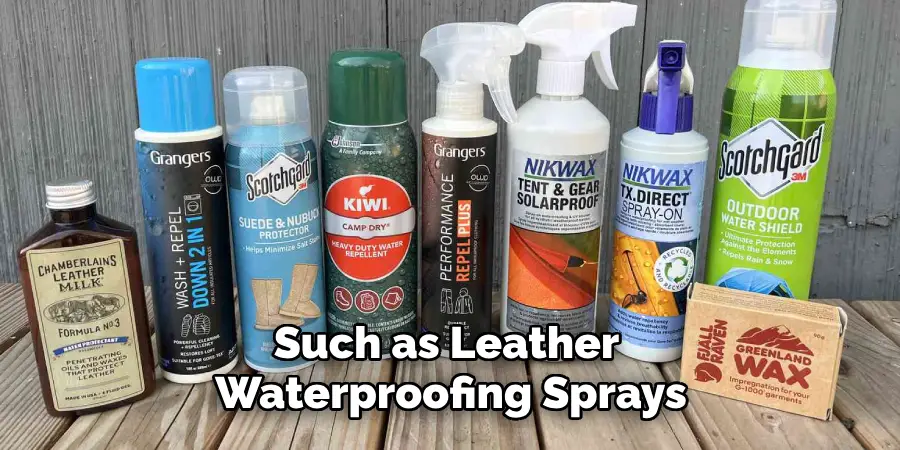
Preventive Measures
To protect your leather items from mold recurrence, it’s important to implement effective preventive measures. Here are some key practices to consider:
Proper Storage
Store leather items in a cool, dry place with good ventilation. Avoid damp or humid areas such as basements, attics, or closets located near bathrooms. Use silica gel packets or dehumidifiers in storage spaces to control humidity levels and prevent moisture buildup.
Regular Cleaning
Regularly clean and condition your leather items to keep them in optimal condition. Dust and dirt can attract moisture and mold spores, so it’s essential to wipe down your leather goods with a soft, dry cloth every couple of weeks. Use a leather cleaner and conditioner periodically to maintain the leather’s suppleness and resilience.
Climate Control
If you live in a particularly humid climate, consider using climate control solutions in your home to reduce indoor humidity levels. Air conditioning, dehumidifiers, and proper insulation can help maintain a mold-free environment for your leather items.
Proper Air Circulation
Ensure that there is enough air circulation around stored leather items. Avoid wrapping leather in plastic or other non-breathable materials that can trap moisture. Instead, use breathable fabric covers or cotton bags that allow air to flow.
Prompt Attention to Spills and Stains
Promptly attend to any spills or stains that may occur on your leather items. Moisture left on the surface can quickly lead to mold growth. Use appropriate cleaning solutions designed for leather and dry the affected area thoroughly after cleaning.
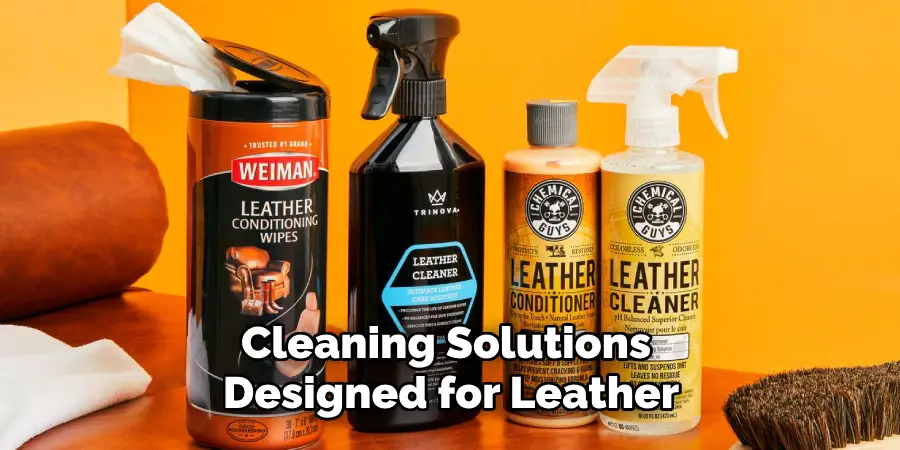
By following these preventive measures, you can significantly reduce the risk of mold growth on your valuable leather possessions and extend their lifespan. Proper care and maintenance are key to keeping your leather items in pristine condition for years to come.
Additional Tips
Use Natural Remedies
For those who prefer using natural remedies, essential oils like tea tree oil and lavender oil have antifungal properties and can be applied to leather surfaces to prevent mold growth. Dilute a few drops in water and use a soft cloth to apply it gently.
Sunlight Exposure
While it’s important to avoid prolonged direct sunlight exposure, occasionally placing your leather items in indirect sunlight for a short period can help to naturally eliminate mold spores. Make sure to monitor the items closely to prevent drying and cracking.
Rotating Use
If you have multiple leather items, consider rotating their use. This allows each item to get some rest time, reducing wear and tear and giving them time to air out properly between uses.
Upholstery Brush
Using an upholstery brush can help you regularly dust off leather items, ensuring that dirt and dust don’t accumulate and provide a breeding ground for mold. Be gentle to avoid scratching the leather surface.
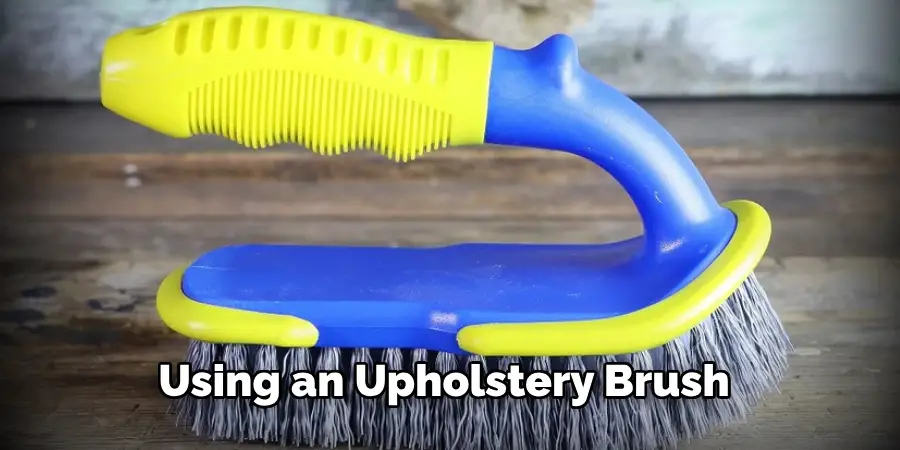
Regular Inspections
Conduct regular inspections of your leather items to catch any early signs of mold or mildew. This proactive approach allows for quick intervention before a minor problem turns into significant damage.
By incorporating these additional tips into your leather care routine, you can further safeguard your valued leather items from mold and ensure they remain in excellent condition over time.
How Much Will It Cost?
The cost of cleaning and restoring leather items affected by mold can vary depending on several factors, including the extent of the mold damage, the size and type of the leather item, and whether you choose to do it yourself or hire a professional. Here’s a breakdown of potential costs:
DIY Cleaning and Restoration
Cleaning Supplies:
Basic cleaning supplies such as mild soap, a soft cloth, and brushes might range from $10 to $30.
Leather Cleaners and Conditioners:
High-quality leather cleaners and conditioners typically cost between $15 and $30.
Waterproofing Sprays:
Specialized waterproofing sprays for leather can cost around $20 to $40.
Professional Cleaning and Restoration
If you opt to hire a professional, costs may vary depending on the company’s rates and factors such as the size of the item or the extent of damage. However, it’s recommended to get quotes from multiple companies before making a decision.
Frequently Asked Questions
Q: Can I Use Bleach to Clean Mold Off Leather?
A: No, bleach can cause discoloration and damage to the leather. It’s best to use a specialized leather cleaner or a mixture of mild soap and water instead. You can also consult a professional leather cleaner for tough mold stains.
Q: Can I Use Vinegar to Remove Mold from Leather?
A: While vinegar has some antifungal properties, it’s not recommended to use on leather as it can cause drying and discoloration. It’s best to stick to specialized leather cleaners or natural remedies specifically designed for leather.
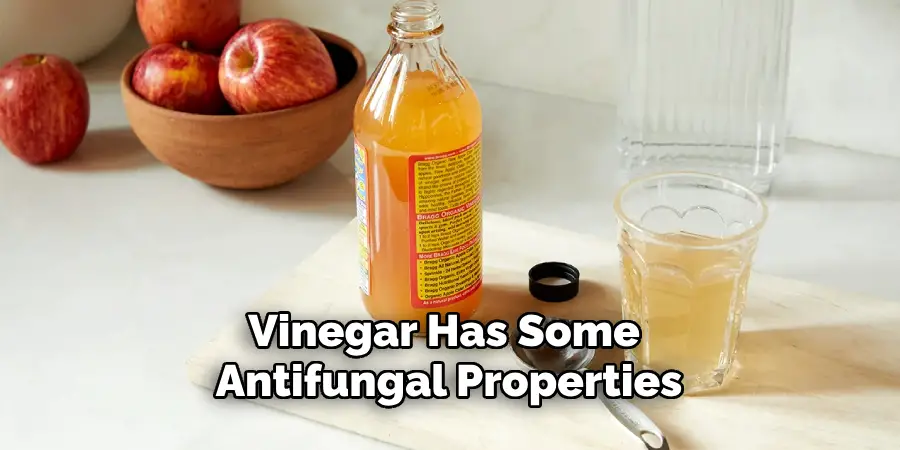
Q: How Do I Remove Mold Smell from Leather?
A: To remove mold smell, follow the steps outlined in this guide to clean and condition the leather. If the smell persists, you can try using a mixture of equal parts water and white vinegar, lightly spraying it on a cloth and gently rubbing it over the affected area. Be sure to test in an inconspicuous area first and dry thoroughly after cleaning.
Q: Are There Any Leather Items That Are More Prone to Mold Growth?
A: Yes, items made from untreated or unfinished leather are more susceptible to mold growth as they lack the protective coating that most finished leathers have. Additionally, items stored in damp or humid environments are also at a higher risk of developing mold.
For such items, it’s essential to be extra vigilant with preventive measures and regular cleaning and conditioning. Overall, proper care and maintenance can help prevent mold growth on any type of leather item.
Conclusion
Mold growth on leather can be a daunting problem, but with the right techniques and steps, it is possible to restore your leather items to their original condition. Remember to always take preventative measures and regularly clean and maintain your leather items to prevent mold growth in the first place.
If you do encounter mold on your leather, follow these steps carefully to ensure safe and effective removal without causing damage. With proper care and maintenance, your leather items can remain in excellent condition for years to come. So keep these tips in mind and enjoy your beautiful restored leather! Happy cleaning! # End of Document
With these steps on how to clean leather with mold, you should now have all the information you need to effectively remove mold from your leather items.

